
|
View from the frigidarium (many views of it below) across to the largest room of the baths with a footed basinDuring the Republican period this area had been warehouses but during Hadrian's reign this part where the ruined warehouses had been was converted to baths. The name comes from the Latin for chariot ("cisium") because some of the scenes in the floor mosaics depicts the activities of cart drivers or coachmen (the common translation for the Latin). These baths were owned or at least used by members of that trade. |
| |
|
The most famous mosaicThe border of the square mosaic in this frigidarium (cold water pool) represents a city wall while yet another fortified wall is in the center with corner towers and elaborate portals. mythical Atlas figures support the four corners. Below this wall and encircling the rooms are both two-wheeled carts (a "cisium") and mythological marine figures. The carts or carriages are driven by both horses and mules. See below. |

|
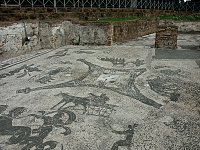
|
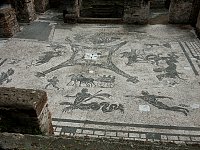
|
| |
|
Left: view of the whole square mosaic: center: view of the Atlas figure on a plinth with mules and their names inscribed just to the left; right: marine scenes with a portion of the border depicting a city wall |

|
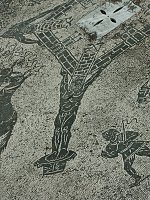
|
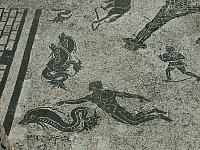
|
| |
|
Mythical marine figures |
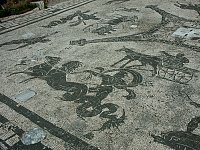
|
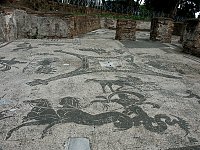
|

|
| |
|
Cisium--a two-wheeled cart for carrying passengersThe cisiarii provided both public urban transportation and interurban service connecting Ostia with Rome along the Via Ostiense. They used both the cisium, for passengers, and the "carruca," a four-wheeled wagon for heavier loads. |
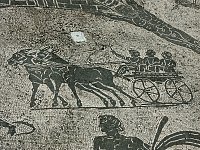
|
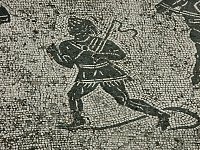
|
|
| |
|
Mules and Mule-driverThe mules' names are inscribed above them. Pudes--or "Modest" can be read here. |

|
| |
|
Other rooms in this bath--here floor mosaics with geometric floral designs |
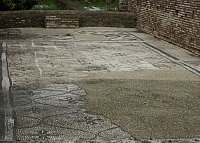
|
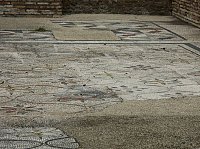
|
| |
|

|

|
Other rooms in this bath--here floor mosaics with geometric designs |


 Click here to return to index of art historical sites.
Click here to return to index of art historical sites.
 Click here to return to index of artists and architects.
Click here to return to index of artists and architects.
 Click here to return to chronological index.
Click here to return to chronological index.
 Click here to see the home page of Bluffton University.
Click here to see the home page of Bluffton University.

